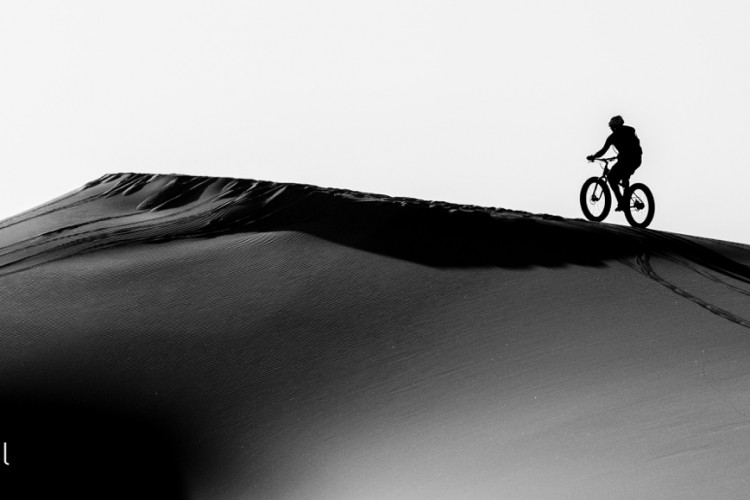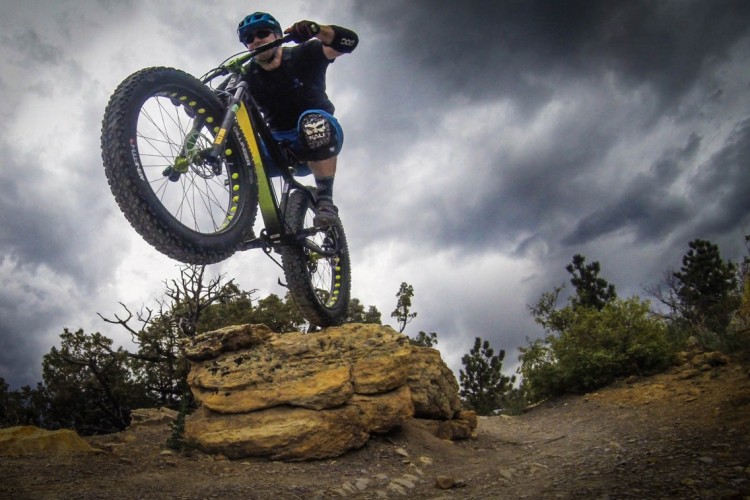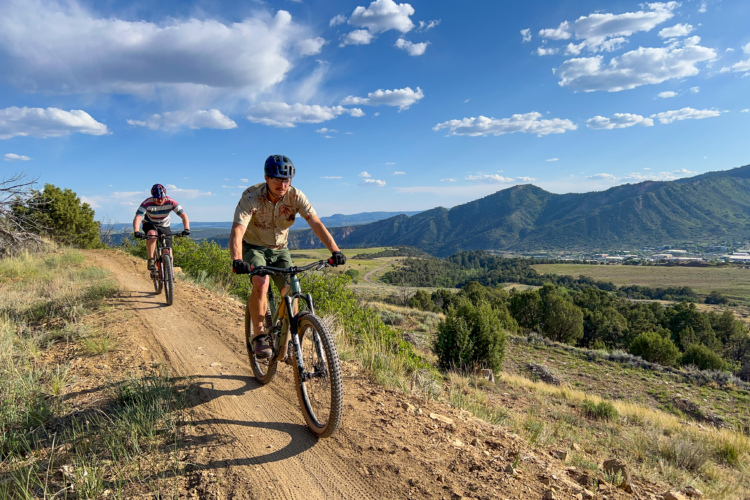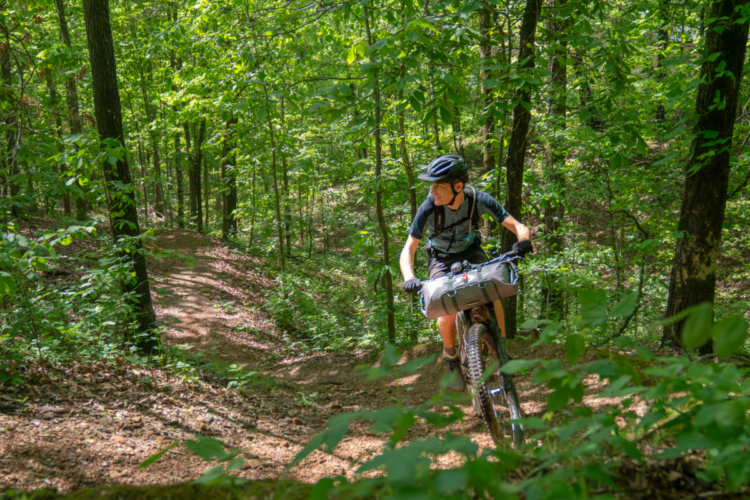
Editor’s Note: “Over a Beer” is a regular column written by Greg Heil. While Greg is the Editor in Chief for Singletracks.com, any opinions expressed in this column are his alone and do not necessarily represent the opinions of Singletracks.com.
Shops roll fat tired bikes onto their showroom floors to prepare for the onset of a long, snowy winter. Riders are shaking down their snow-specific rigs, checking to make sure they have all the gear they need to brave the cold, dark, wet trails of winter—and inevitably, adding more gear to their Christmas wishlists.
Some people have argued that fat biking isn’t even really mountain biking, or is almost another sport entirely. Of course, I disagree with that sentiment—I think fat biking is one of the most important revolutions in the sport of mountain biking, ever.
[see_also id=’198077′]

On the other end of the spectrum, Red Bull Rampage just wrapped up in the Utah desert less than a month ago. While we can’t tear our eyes away from those death-defying stunts no matter how hard we try, the cynics still say, “this isn’t mountain biking. No, these guys are just acrobats that just happen to use a bicycle in their stunts. Rampage isn’t true mountain biking.”

Stunt-style mountain biking is further conflated with dirt jumping. Is dirt jumping really mountain biking just because the rider is using a 26” wheel? Yet somehow, all of a sudden it becomes BMX riding—a totally different discipline—when he swaps for a 20” wheel and a different-shaped handlebar?
As we consider the disciplines that are perhaps more core to the sport of mountain biking, we generally reference cross country, trail, enduro/all-mountain, and downhill. But even when it comes to cross country versus downhill, their respective adherents still debate and fight about what is and is not “true” mountain biking.
Cross country riders will say, “you need to pedal up the hill and earn your descent. Shuttling, getting a chairlift ride? That’s not true mountain biking—you didn’t work for it!”
The downhillers will scoff, “riding flat, buff trails that you could easily pedal on a cyclocross bike? That’s not true mountain biking—technical gnar, big jumps, and riding the line between radness and injury/death is what puts the ‘mountain’ in mountain biking.”
Believe it or not, this discussion of what is and is not “real” mountain biking even bleeds over into the never-ending trail design debate. As if riding a bike in the woods somehow isn’t enough to qualify as “mountain biking,” the anti-flow trail crowd will argue that “wide, manicured trails with berms and jumps is not true mountain biking. That’s a vanilla, flavorless type of riding that is anything but the true rocky, rooty, challenging, narrow, natural feel of how riding bikes in the woods first began.”
[see_also id=’190939′]
The proponents of flow trails will sometimes even argue against natural-style singletrack trails, saying that “mountain biking is all about speed and getting air. I don’t have any desire to ride slow trails that threaten to rattle me off of my mountain bike.”
The Richness of Mountain Biking
While perhaps it is beneficial to draw the line between mountain biking and not-mountain biking somewhere (what about riding gravel roads? When does a mountain biker turn into a groadie?), more and more I’ve come to appreciate the many different strains of cyclists who all identify, in some way or another, as mountain bikers. The fact that all of these different types of riders enjoy riding bikes in the woods, on a variety of trail types and in a variety of different ways, makes our subset of cycling so incredibly rich and diverse.
As a mountain bike publication, Singletracks is able to talk about so many types of riding—and we enjoy covering it all! From endurance bikepacking to Rampage, every flavor of mountain biking finds a place on Singletracks.
Personally, I refuse to pigeonhole myself into just one type of riding. Why limit myself to, say, just enduro racing when I can go do adventure riding, hit the bike park with a dual crown fork, go bikepacking, break out the fat bike in the winter time, or even (gasp) put skinny tires to pavement?
If there’s one thing that will keep me riding bikes for decades to come, it’s this rich diversity that our broad sport offers, and the constant variations that we can enjoy. While other sports like, say, tennis, consist of doing roughly the same few things over and over again in the same closely-defined bounds, the broad diversity of human-powered biking is incredibly attractive.
Let’s not limit ourselves by stereotyping or discriminating against one type of rider just because we might not agree with how they choose to interpret the sport. Instead, let us embrace this incredible diversity for all it gives us!











12 Comments
Dec 2, 2017
It was odd that some guy felt so badly about who he was that he decided to sling abuse at people who didn't ride what he did.
I've got an idea. Let's all ride what we want and be nice to each other.
Dec 4, 2017
This!
Nov 30, 2017
Peace.
Nov 30, 2017
May 7, 2018
Nov 29, 2017
Dec 1, 2017
Nov 30, 2017
Dec 2, 2017
Dec 4, 2017
Dec 2, 2017
Nov 30, 2017